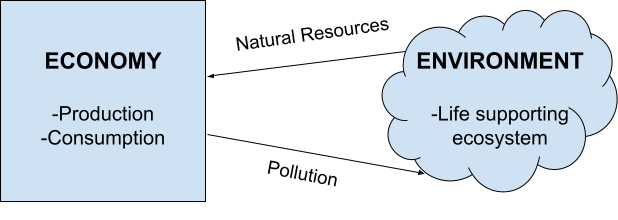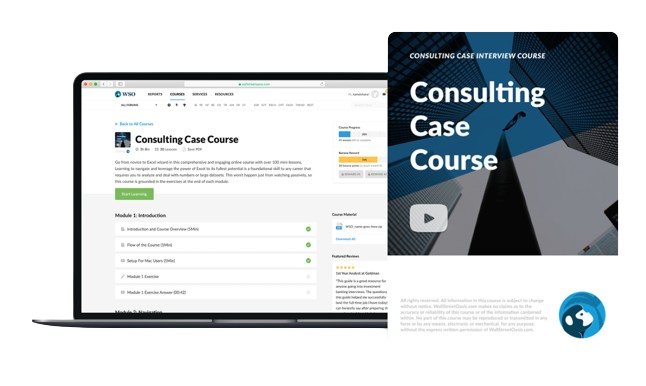Sustainable Development
It is an economic development that does not compromise natural resources and ecosystem services for future generations
What Is Sustainable Development?
Sustainable development is economic development that does not compromise natural resources and ecosystem services for future generations.
Since the 1950s, economic growth has been considered the best way to defeat poverty. However, economists worldwide have realized that economic growth is not only sometimes used within society over time.
Often, those who need it the most are the ones who benefit the least from economic growth and development.
The economy can be thought of as a pie. As the economy grows, the pie gets bigger. If the pie is big enough, it can be shared generously amongst all members of society,
However, the ingredients, aka the resources for making this pie, are limited. In our attempt to grow the global economy, we are depleting natural resources and disturbing ecosystems.
This is where the issue of sustainability comes in. Sustainable development aims to grow the economy and alleviate poverty without harming the environment.
There should be enough resources left to meet the needs of future generations for development to be considered sustainable.
Sustainable development emerged in the 1980s and has recently gained popularity.
With recent climate change and environmental degradation issues, it is moving towards a future that uses resources wisely, which is imperative for the sustenance of the economy and humanity.
Key Takeaways
- Sustainable development is a term used to refer to the usage of resources in a manner that does not compromise them for future generations.
- The harmful impacts of economic activity disproportionately affect minorities. Hence, keeping the environment in mind when planning for development is crucial.
- Economic activities impact the environment, which in turn affects environmental activities. In this way, further development is dependent on how we treat natural resources.
- Although sustainability still has a long way to go, the field has been gaining momentum in recent years and is likely to, if not already, become a crucial part of public policy.
Economy and the environment
The economy depends on the environment for producing goods and services. Therefore, inputs are obtained from the natural environment before being transformed into goods or services that can be consumed.
During the early days of neoclassical economics, environmental constraints were not as crucial to development as they are now. Hence, economists consider ecological issues when mapping out the story of cities and countries.
The current economic system receives environmental inputs and uses them for production. Often, during the production processes, waste is generated. This waste is then returned to the environment.

For a long time, using up resources and discarding waste were done with little thought.
Production did not realize the magnitude of the adverse effects that production can have on the planet.
This view of the relationship between the environment and the economy came to be known as the cowboy economy. The term was coined by Kenneth Boulding, an American economist known for his work on ecological economics.
The phrase alludes to the "wild west" of the 19th century. In contrast, anyone moving away from the more urbanized and populated eastern seaboard could use the seemingly inexhaustible natural resources.
Today, however, environmental issues are at the forefront of growth. They pose serious challenges to socioeconomic development and must be addressed urgently.
The realization that using up natural resources affects the potential for future production has led to revising solutions for sustained economic development.
Understanding Stock And Flow
There are many different types of natural resources available to us. One way to differentiate between them is to determine whether the resource is a stock or a flow.
If the resource's current usage impacts its future availability, it is called Stock. On the other hand, if the current usage of the resource does not impact its availability in the future, it is a flow.
A classic example of a flow resource is wind energy. Utilizing the power of the wind now will not affect its availability in the future.
Stock resources can be divided into renewable resources, such as plants and animals, or non-renewable resources, such as fossil fuels and nuclear energy.
Note
Renewable resources, as the name suggests, can renew over time. Plants and animals can reproduce and continue to populate the planet. On the other hand, non-renewable resources take several years or decades to replenish.
Using a renewable resource at a rate less than its natural growth rate causes the stock size to increase.
If the resource is used at the same rate as its natural growth rate, the stock size remains the same, but the resource can be used indefinitely. This rate of usage is also known as the sustainable yield.
Using a resource more frequently than its sustainable yield will lead to its depletion. Since non-renewable resources take much more time to replenish, using them currently leads to their depletion regardless of the usage rate.
Pollution - A stock or a flow?
Like resources, pollution can also be categorized as a stock or a flow. However, the idea of pollution being a stock material resonates more with economists, whereas it is a flow that finds favor with ecologists.
First, let us consider the perspective of economists. Any pollution generated by production adds to the Stock of pollution. But, on the other hand, natural decay processes take away from pollution stock.
From the perspective of ecologists, however, the environment can assimilate, which is expressed in a residual flow rate.
Pollution results from the residual flow rate exceeding the environment's ability to assimilate.
Suppose the residual flow is less than or equal to the ability to assimilate. In that case, there is no pollution—further, the earth's ability to assimilate declines if pollution persists for a long time.
Note
Ethical considerations, including social justice, equity, and human rights, are integral to sustainable development, ensuring that development efforts are inclusive, equitable, and respectful of diversity and cultural heritage.
Not only does pollution exhaust resources used for production, but it also exhausts natural recreational amenities available to us. For example, swimming in the ocean or hiking on a mountain does not involve production. Yet, they provide us with recreational services.
If the ocean or hiking trail is polluted with litter, these natural amenities are taken away from us.
Recycling and reusing are two ways to reduce the pace at which pollution is generated. However, it also reduces the demand for reproducible materials and allows the Stock to build up.
For example, producing one kilogram of beef takes around 15,500 liters of water. In contrast, producing one kg of potatoes takes only 250 liters of water. Production of other vegetables also uses around the same amount of water.
Hence, switching to a vegan alternative for meat would reduce water depletion while simultaneously feeding a larger number of people.
Sustainable Development Goals (SDGs)
In 2015, the United Nations (UN) adopted seventeen "sustainable development goals (SDGs)" to increase the quality of life, not just for the current generation but for future generations as well.
All countries are expected to reach these goals by 2030. Although it may seem ambitious, several countries have taken major steps toward these goals over the years.
Listed below are the seventeen goals that are expected to improve welfare across the globe:
1. No Poverty
2. Zero hunger
3. Good health and wellbeing
4. Quality Education
5. Gender equality
6. Clean water and sanitation
7. Affordable and clean energy
8. Decent work and economic growth
9. Industry, innovation, and infrastructure
10. Reduced inequality
11. Sustainable cities and communities
12. Responsible consumption and production
13. Climate action
14. Life below water
15. Life on land
16. Peace and justice strong institutions
17. Partnerships to achieve the goal
The UN's website is a great way to introduce yourself to each goal and learn more about how it benefits the economy.
Although the goals may appear broad at first glance, each has specific targets and indicators used to measure the progress toward each target.
Sustainable Development example
Let us look at the following hypothetical example of sustainability being incorporated into development to strengthen our understanding of sustainable development.
Let us assume Sadie has recently moved to a relatively sunny part of Arizona. She is building a house in the state and needs to make a few important decisions regarding its utilities.
She can choose to go the traditional route and use fossil fuels to generate electricity, or she can install solar panels and get clean energy to power her house.
Note
Solar energy, protection of green spaces like wetlands, forests, etc., crop rotation, and water-efficient fixtures are examples of sustainable development.
Sadie decides to opt for solar paneling. This is an example of sustainable development because solar energy is a natural resource that does not get exhausted through usage.
Using Arizona's sunny climate to her advantage, Sadie is reducing the pollution her house would have otherwise caused.
By choosing not to use non-clean energy, she is allowing the Stock of fossil fuels not to be impacted by the construction of her house. In this way, the development of her house and subsequent urbanization of the area is sustainable.
working towards a sustainable economy
As discussed, natural resources are limited and must be wisely employed in production. Therefore, there should be enough resources to satiate the needs of the present while also leaving excess behind for future generations.
At present, several people, especially in rural areas and underdeveloped countries, are unable to have their basic needs met. Developed nations also face the issue of poverty, with several left homeless and unemployed.
Economic development was considered separate from the natural environment for a long time. The eradication of poverty was seen as a challenge that sufficient economic growth could solve.
Some went as far as to say that environmental considerations are a luxury for the wealthier nations. Arguably, they are not wrong. However, concern for the environment can be integrated into economic growth.
Note
In 2015, the UN established seventeen sustainable development goals to improve the quality of life for present and future generations.
In 1987, the World Commission on Environment and Development (WCED) published 'Our Common Future,' also known as the Brundtland Report, named after the then-chairperson of the commission.
This report is one of the most influential works in sustainable development.
The report highlighted several issues with current trends that may challenge future growth. It also emphasized the environmental constraints that must be acknowledged when strategizing development.
Since then, several global initiatives have incorporated sustainability as a requisite for growth.
From the United Nations Conference on Environment and Development (UNCED) to the 2015 Paris Agreement and more, it is clear that concerns for the environment are growing with the rise in temperatures.
These events are an optimistic signal. Although economics still has a long way to go regarding sustainability, the world is increasingly becoming more open to the idea.
Conclusion
Sustainable development represents a paradigm shift in how we approach economic growth and societal progress.
It emphasizes the importance of balancing economic prosperity with environmental conservation to ensure the well-being of present and future generations.
By integrating sustainability into development strategies, we can address pressing issues such as poverty alleviation, resource depletion, and climate change while fostering inclusive and resilient economies.
Note
Actions taken to promote sustainable development have both local and global implications, as local initiatives contribute to global sustainability goals and global trends impact local communities and ecosystems.
It underscores the need for responsible stewardship of natural resources and ecosystems to maintain the Earth's capacity to support life and sustain economic activities.
By aligning our efforts with the United Nations Sustainable Development Goals and embracing innovation and green technologies, we can build a more prosperous and sustainable world for generations to come.
Together, we have the power to shape a future where economic development thrives in harmony with nature, ensuring a better quality of life for all.
Free Resources
To continue learning and advancing your career, check out these additional helpful WSO resources:




or Want to Sign up with your social account?